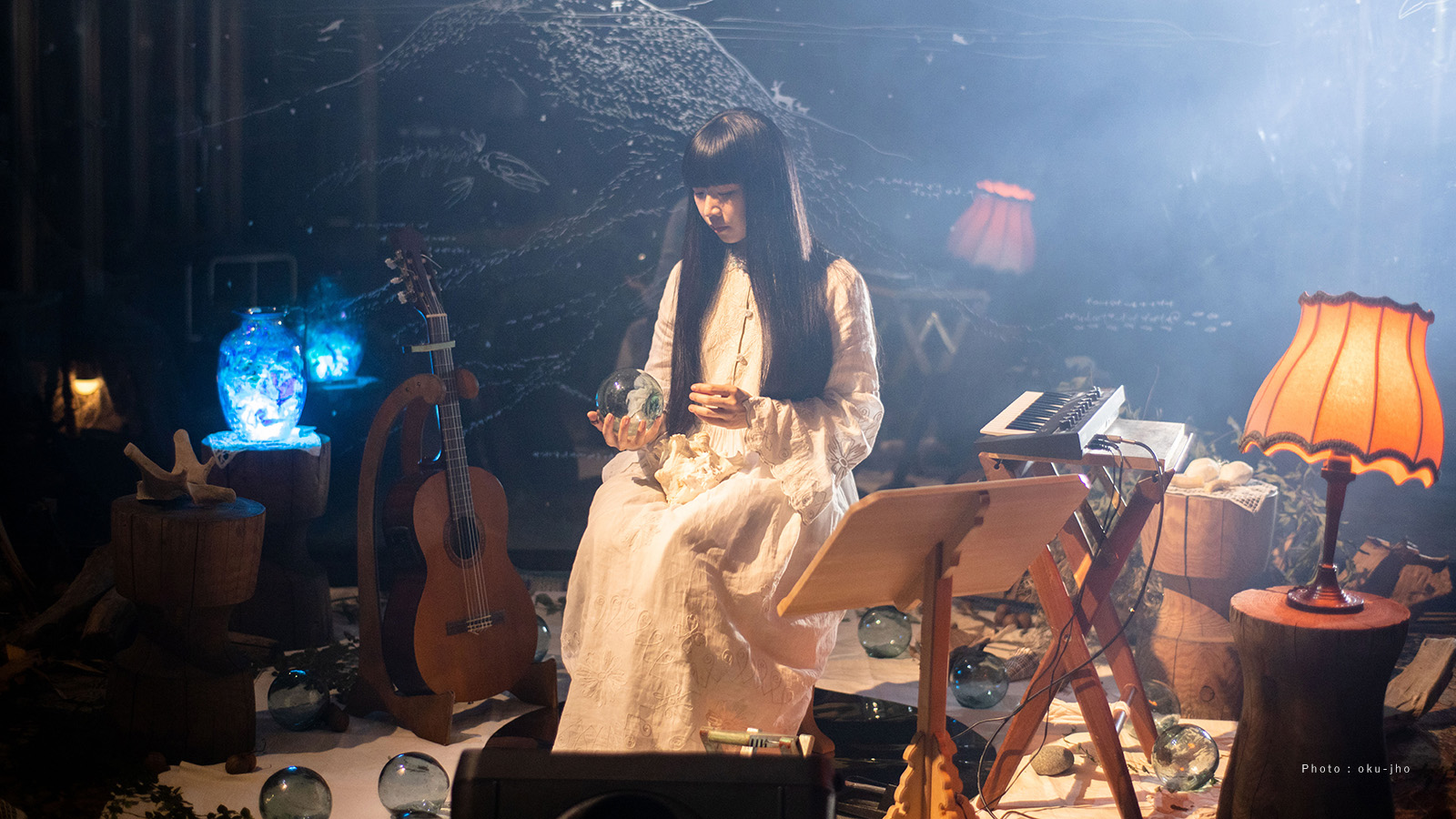
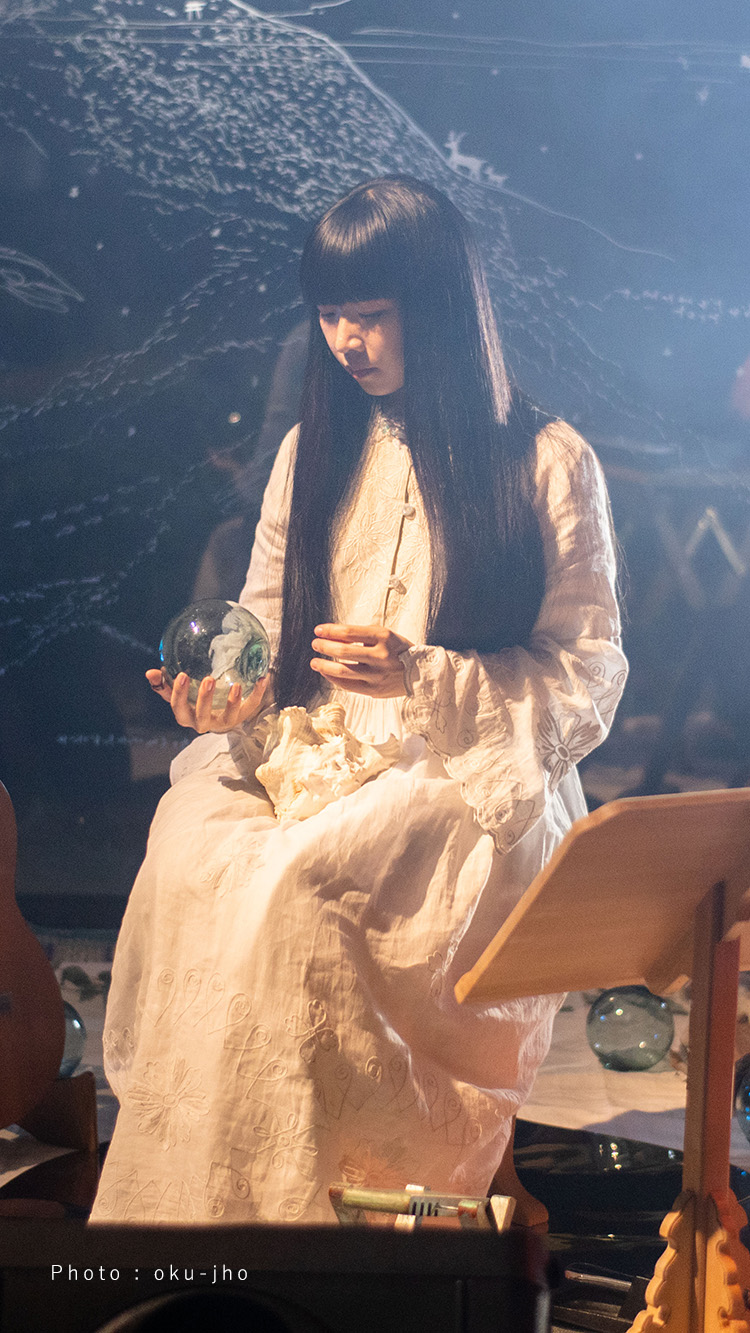
REPORT #01
Streaming : Saturday, February 13, 2021 / 5 p.m.
Session 1 : Gozo Yoshimasu(Poet)
Session 2 : Ichiko Aoba(Musician)
“Reborn-Art ONLINE” was a string of pre-events of the Reborn-Art Festival (RAF) 2021-22. The first session of “Communing : Lessons for Listening to Voiceless Voices,” a live online program initiated by Kenji Kubota, the curator of the upcoming RAF that is scheduled to open in the summer, was held on February 13, 2021.
Featured artists were poet Gozo Yoshimasu in part 1, and musician Ichiko Aoba in part 2. Both of them have been invited by SHIMABUKU, who curated the previous RAF 2019 in the Ayukawa area, to stay and create works in Ayukawa at the southern tip of the Oshika Peninsula.
During the previous event, Yoshimasu transformed an old shop into “The Poet’s House,” entertained guests in a nearby private house, and stayed in the “room KINKAZAN” at the Hotel New Sakai, located a 10-minute drive from there, where he composed a poem while overlooking Kinkasan Island and the sea. That room, with the poem written directly onto the windowpanes, remained open to the public as a permanent exhibition after the end of the program, and Yoshimasu is in fact going back to this room almost every month.
Aoba had showed at the previous event an installation titled “Wind Room,” in which she scattered bones of whales, shells and sounds she found at Ayukawa, as well as her own voice and drawings across the space of a private house. After being used as a public time signal in Ishinomaki City, the acoustic work “Time Signal” was stored on a CD-R. Aoba also appeared in the opening live performance “Korogaru, shi (Rolling, poems),” and in addition, she frequently served home-made dishes at the ”Poet’s House BAR,” a gathering place for the local people and visitors alike.
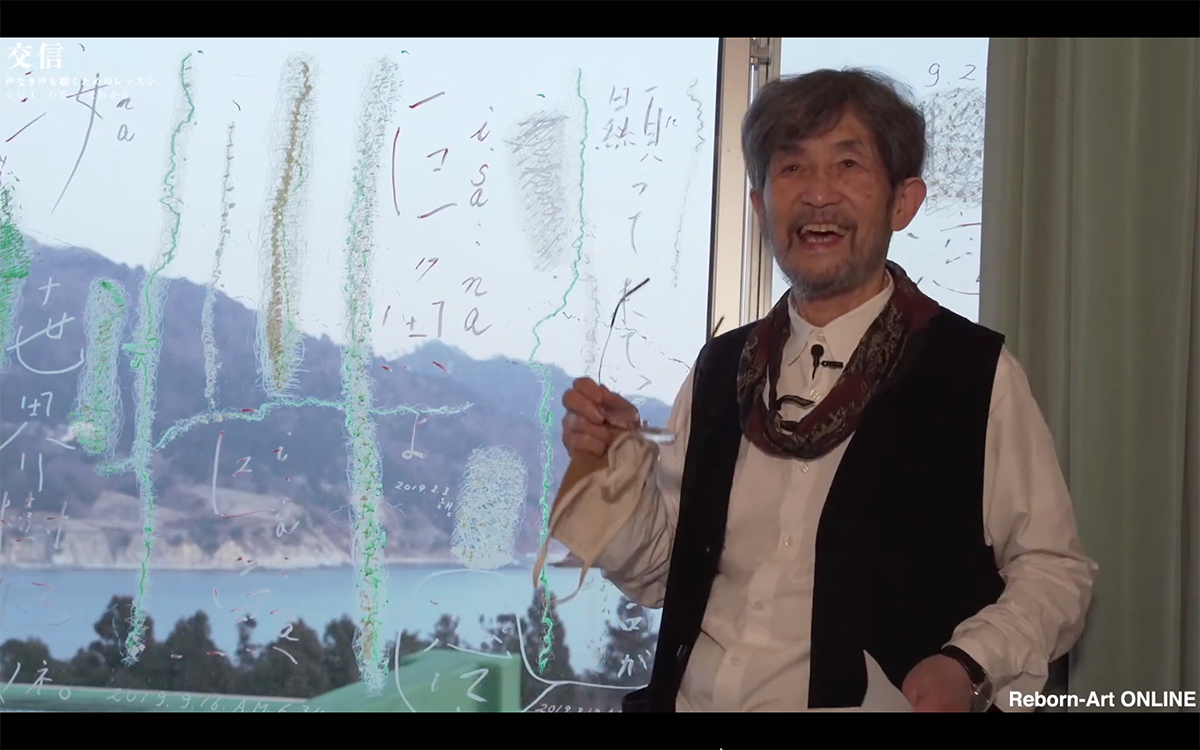
At 5 PM, shortly before sunset, RAF’s administrative director Gota Matsumura introduced Gozo Yoshimasu, who appeared on the stage and pointed at the “marvelous scenery” that he was seeing from the window : The area of the straits were the backwash after the earthquake and tsunami had exposed by the seabed, and in the background, Kinkasan Island, which is counted as one of the three big hallowed grounds located closest to the earthquake’s seismic center. Likening this room to a “transparent egg,” Yoshimasu stressed how writing poems here was like “knocking from the inside of the heart.”
In the morning of the same day, Yoshimasu had filmed “Ishinomaki no Ajishima no saki ni, haha naru atatakai umi ga hyojo o misehajimeta (The warm mother sea began to show its face behind Ajishima in Ishinomaki),“ a video inspired by Ichiko Aoba’s report of a dream she had (published in the March 2021 issue of Shincho), from this room. Here he played a part of the video, while reminiscing about the bright seaside sceneries that he had encountered at Ayukawa.
In his account, Yoshimasu illustrated how, during a boat trip from Ayukawa to Ajishima in 2019, he felt as if he was approaching a tropical kind of place that had appeared in his own dreams.
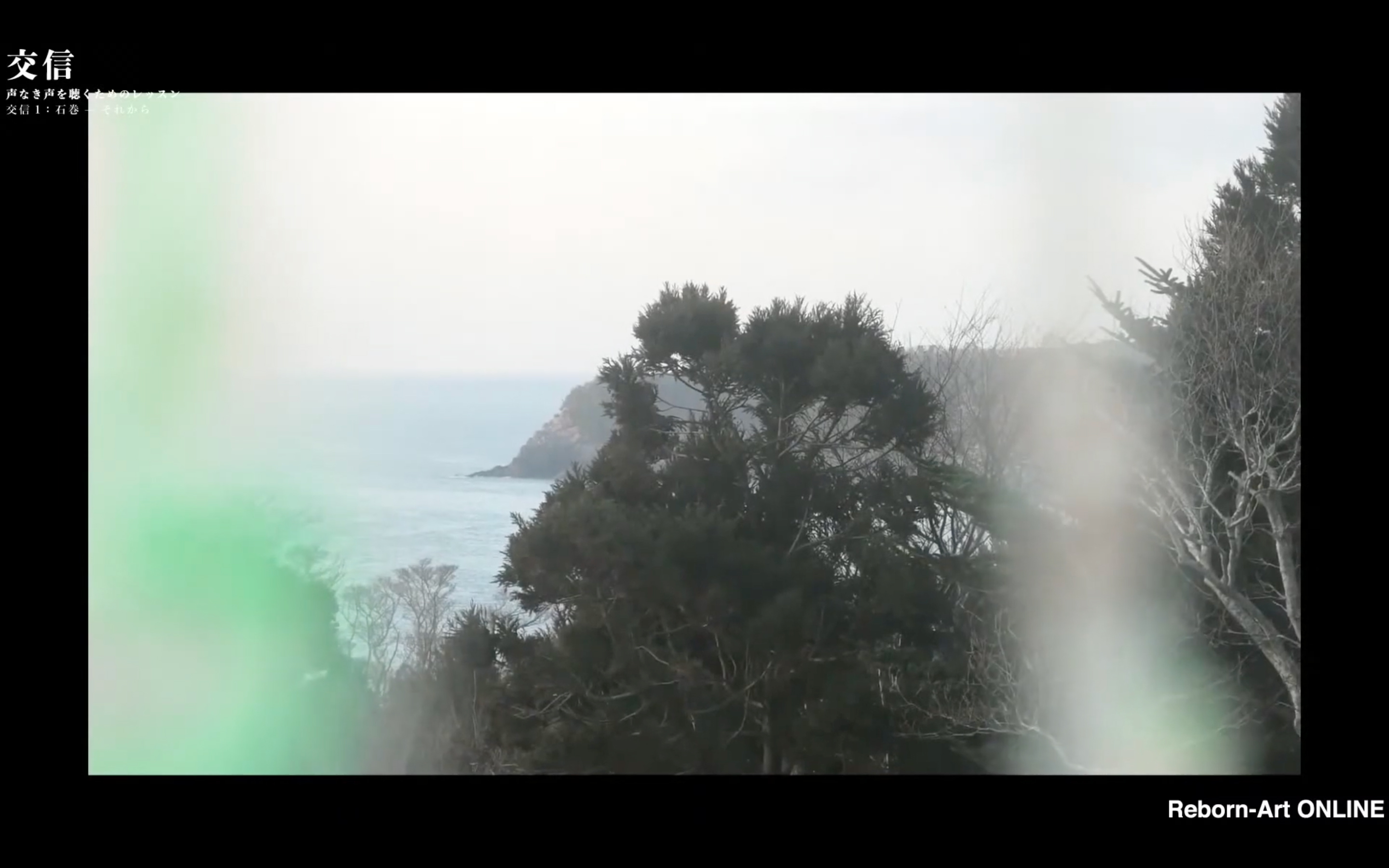
While browsing through a special feature on literature in volume 5 of the Ishinomaki Gaku magazine later in 2020, Yoshimasu was amazed when he stumbled across a line in Ango Sakaguchi’s account of a trip to Ayukawa (quoted by Eiichi Honma). It was a particularly astonishing discovery, as Sakaguchi’s vision of “going southward while feeling as if gradually entering a bright […] tropical zone” seemed directly related to Shinobu Orikuchi’s vision of a “homeland of the soul” that he seemed to recognize in the distance when gazing across the ocean from the Shima Peninsula. In addition, the place that Ichiko Aoba had seen in her dream was someplace by the sea in Okinawa, so Yoshimasu found himself surrounded by images of bright seascapes. “I’m hearing voices as if there was a bright ocean calling me,” he claimed, adding that it was only in the morning of this day, that he realized that this was the very reason why he is going back to this particular room in Ayukawa time and again.
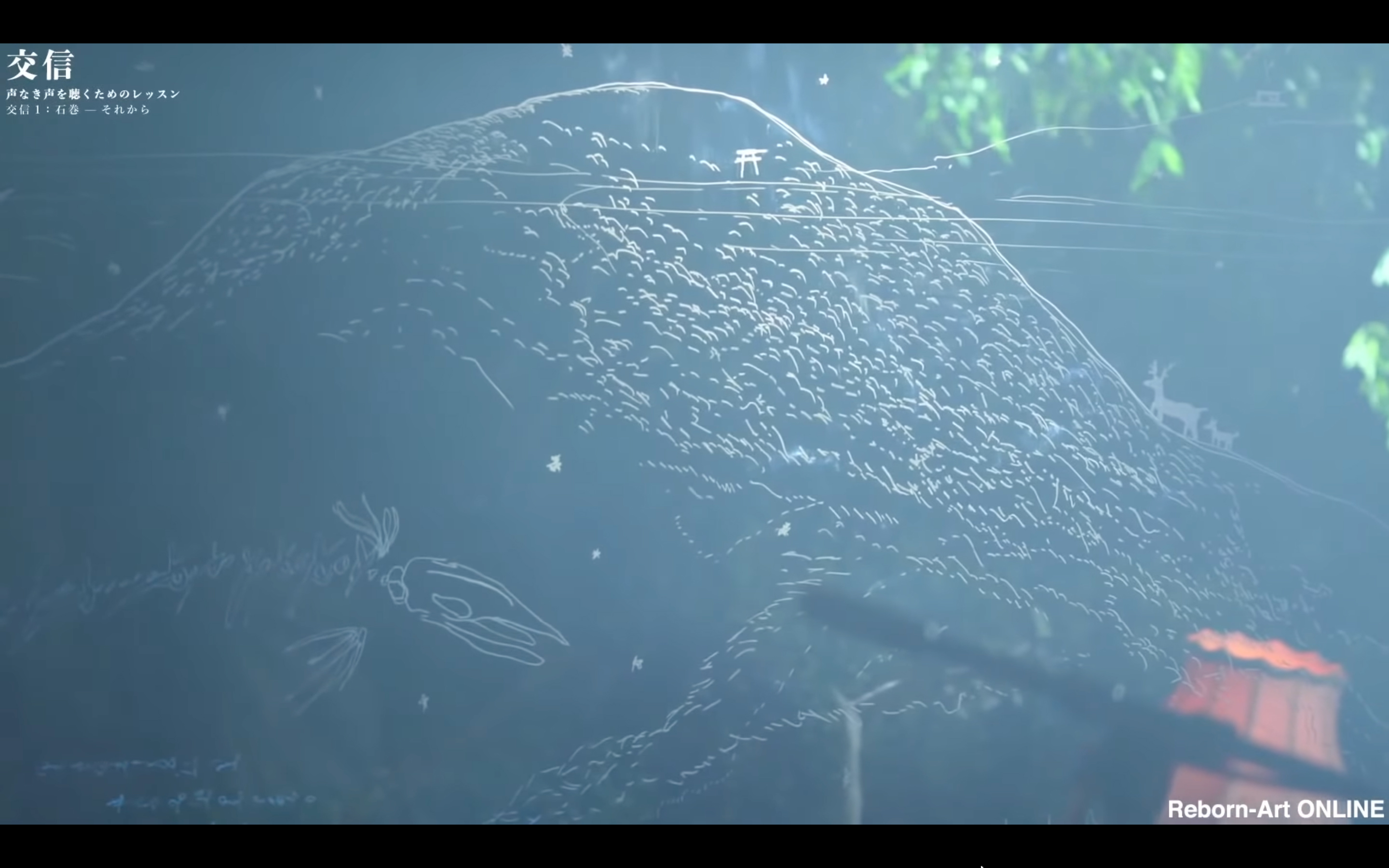
Yoshimasu further appealed to his audience that everyone needed to feel their own bright ocean, and that this doesn’t necessarily have to be linked to one particular place. Whales don’t measure their routes by longitudes and latitudes. There is an “entranceway to a bright ocean” in our chests, and a path from there that leads deep into the ocean of the heart. The important thing is to dream in one’s heart.
In an extreme purgatory where earthquakes and other disasters occur, it is elemental to imagine and perceive things that are invisible and inaudible. The restless poet’s mind was greatly impressed when he finally discovered this after having repeatedly traveled to Ayukawa for almost two years.
Once the sun had set, part 2 of the event started in the form of Ichiko Aoba’s live performance at a certain venue in Tokyo. During her set, Aoba was surrounded by various objects including bones of whales, sea water and sand that had been sent to her from Ayukawa, as well as drawings of Kinkasan, deer, skeletons of whales in the sea, and other things that she had drawn onto the window pane. In the first song, “Dawn in the Adan,” the finger noise on the acoustic guitar’s body reverberated across the venue like the cries of a black-tailed gull.
After playing three songs including “Hoshi no present,” a duet with Yoshimasu on the beach at Ayukawa, Aoba began to talk. About the whale that she had met in Ayukawa after RAF 2019, and how it had been living in her body; and about her southward journey, together with the whale. She then echoed Yoshimasu’s thoughts, musing that “the place where we are is in fact neither in the north nor in the south, and neither in the east nor in the west. It is a seashore where life itself is just rolling, on and off, on and off…”
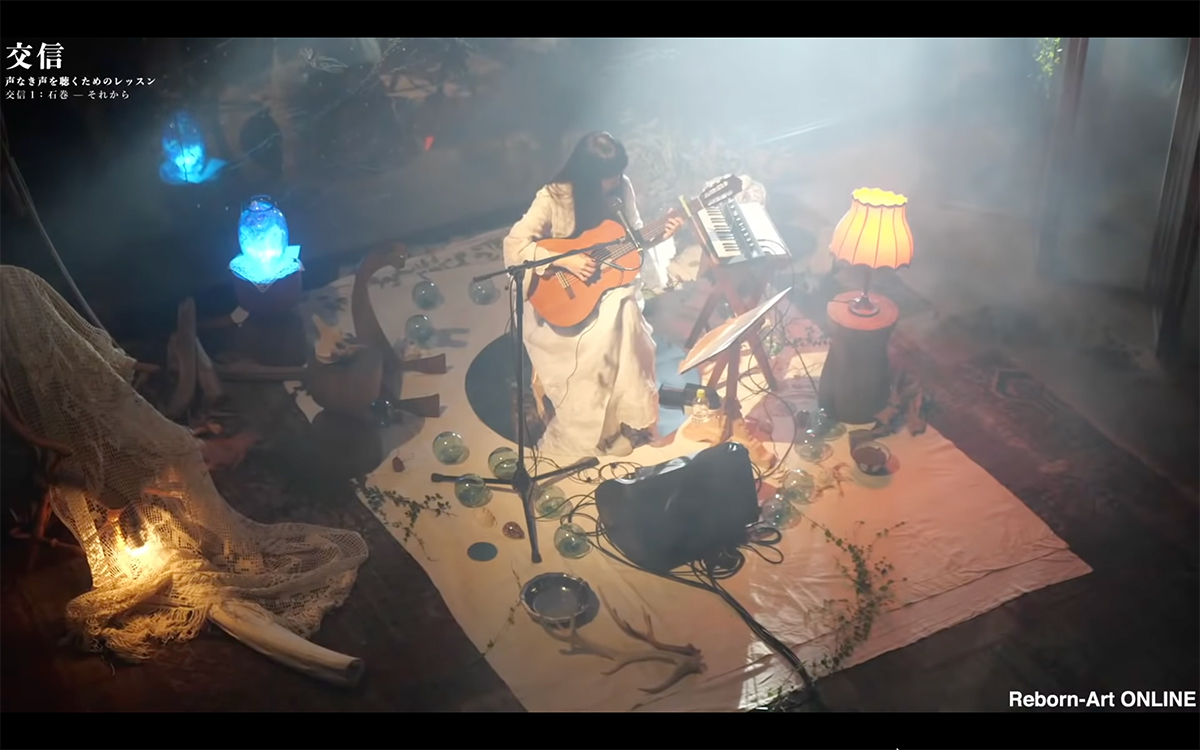
Toward the end of her performance, Aoba presented a cover of Haruhi’s “HIZUMI” that was written and composed by Takeshi Kobayashi. With her distinctly clear voice, Aoba rediscovered the song’s lyrics that somewhere also seemed to concern us and our present-day life after a major earthquake. The final song, presented in a space not unlike the deep blue sea itself, was “Seabed Eden.” When she finished, Aoba got up and wrote with a white pen onto the window; “Ishinomaki – Thereafter”.
The event was a communion of two artists who looked at invisible things, and listened to inaudible things. For two hours, they kept me incited, with my consciousness connected, and my imagination moving in sync or jumping ahead. In retrospect, it appears to me that the big earthquake that occurred only a few hours later, was perhaps not a totally unrelated event.
Reborn-Art ONLINE Archive Channel
Text : Sayuri Kobayashi (art writer)
Songs performed by Ichiko Aoba :
Dawn in Adan
Hoshi no Present
Red Silence
HIKARINO FURUSATO
Easter Lily
Anthony the sheep
Asleep Among Endives
HIZUMI
Luminescent Creatures
Seabed Eden
- credit -
Communing : Lessons for Listening to Voiceless Voices
Communing 1 : Ishinomaki—Thereafter
・ Curation : Kenji Kubota
・ Organization : Reborn-Art Festival, ap bank
Part 1
・ Storyteller : Gozo Yoshimasu
・ Facilitator : Gota Matsumura
・ Video and streaming : Naoki Hamada(KUNK), Takahiro Sato
・ Cooperation : SAKAI
・ Staff : Harumi Shimura, Hisako Takeuchi, Chiaki Sakaguchi, Sayako Mizuta
・ Special Thanks : Ichiko Aoba, SHIMABUKU, Katsuko Saito, Shigeko Kaziwara, All of visitors of The Poet's House and Room Kinkazan
part 2
・ Music : Ichiko Aoba
・ Video and streaming : Yo Noguchi (oku-joh), Mai Kobayashi (oku-joh), Iroha Goda (oku-joh), Keisuke Jo (oku-joh)
・ Sound engineer : Makoto Yoshida
・ Lighting design : Hitoshi Sato, Rui Seki
・ Costume and space decoration : Kimi Yokoyama (NEWSEE), Hayato Hiramatsu(NEWSEE)
・ Stage manager : Yo Takano, Tetsuro Yokono (ONE LIVE)
・ Cooperation : KURKKU
・ Staff : Hajime Shiraishi (KURKKU), Maki Tanahashi, Harumi Shimura, Chiaki Sakaguchi, Sayako Mizuta
・ Special Thanks : Gozo Yoshimasu, all of you in Ayukawa




